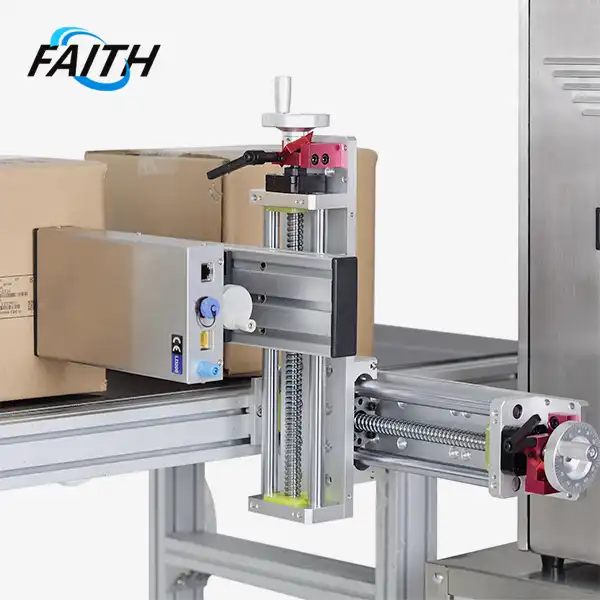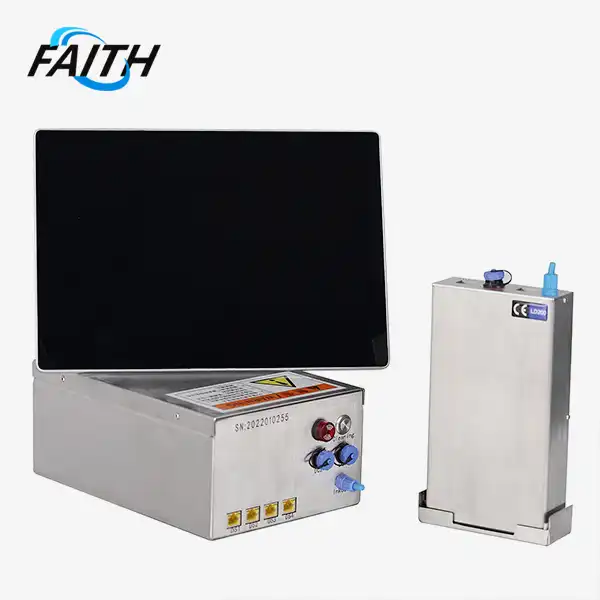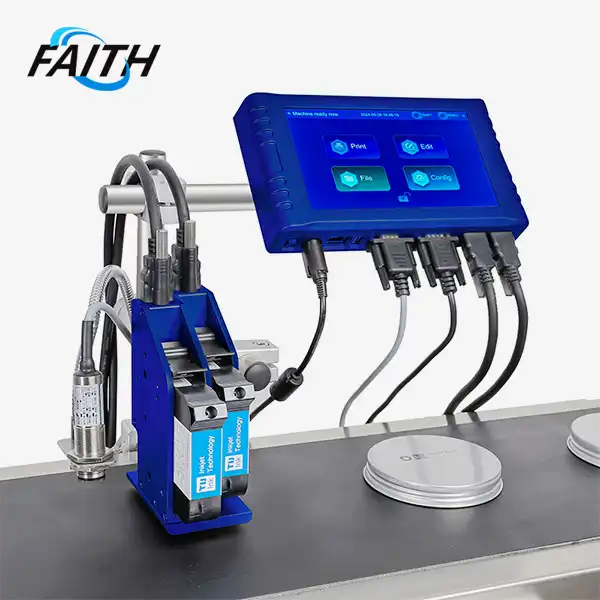What is the difference between character printer and page printer?
The main difference between character printers and page printers lies in their printing methods and capabilities. Character printers, such as dot-matrix printers, print one character at a time, making them slower but ideal for specific applications like printing receipts or labels. On the other hand, page printers, like laser or inkjet printers, print entire pages at once, offering faster speeds and higher quality output. This distinction is crucial when considering large characters printers, which combine elements of both to provide high-resolution code printing on various substrates.
Understanding the Fundamentals of Character and Page Printers
Character Printers: A Closer Look
Character printers, often associated with dot-matrix technology, have been a staple in certain industries for decades. These printers utilize a print head that moves across the paper, striking an ink ribbon to form characters. While they may seem outdated, character printers still serve essential roles in specific applications.
One notable advantage of faith printers is their ability to create multiple copies simultaneously using carbon paper. This feature makes them indispensable in environments where instant duplicates are required, such as in retail or logistics. Moreover, their simple mechanism allows for printing on continuous forms, making them suitable for printing invoices or shipping labels.
However, character printers have limitations. Their print quality is generally lower compared to modern alternatives, and they can be quite noisy during operation. Additionally, their printing speed is relatively slow, as they print one character at a time.
Page Printers: The Modern Approach
Page printers, encompassing both laser and inkjet technologies, represent a significant leap in printing capabilities. Unlike character printers, page printers can produce an entire page of text or graphics in a single pass. This ability dramatically increases printing speed and allows for much higher resolution output.
Laser printers use a laser beam to create an electrostatic image on a drum, which then attracts toner particles to form the printed image. This process enables them to produce sharp, high-quality text and graphics at impressive speeds. Inkjet printers, on the other hand, spray tiny droplets of ink onto the paper to create images and text. While typically slower than laser printers, inkjet technology offers excellent color reproduction, making it a popular choice for photo printing.
Large Character Printers: Bridging the Gap
The Evolution of Industrial Printing
Large character printers represent an intriguing evolution in industrial printing technology. These printers combine elements of both character and page printers to meet specific needs in industrial coding and marking applications. They're designed to print large, easily readable characters on a variety of surfaces, often in challenging environments.
One of the key technologies employed in large characters printers is drop-on-demand piezo technology. This advanced printing method uses piezoelectric crystals to precisely control the ejection of ink droplets, resulting in high-resolution code printing. The ability to produce clear, durable markings on various substrates makes large character printers invaluable in industries such as manufacturing, logistics, and packaging.
Versatility and Durability in Industrial Settings
Large character printers are renowned for their robustness and durability, making them well-suited for industrial applications. They can withstand harsh conditions, including exposure to dust, vibrations, and extreme temperatures, which might adversely affect more delicate printing technologies.
These printers offer remarkable flexibility in terms of print size and content. For instance, some models can adjust print height within a range of 10-126mm and width arbitrarily. This adaptability allows for printing multiple lines of text in various dot matrix configurations, catering to different marking requirements.
The printing capabilities of large character printing extend beyond simple text. They can handle real-time date clocks, batch numbers, counting, shift information, and even manipulate font orientation (upside down, left and right flip). This versatility makes them indispensable in production lines where traceability and variable data printing are crucial.
Choosing the Right Printer for Your Needs
Assessing Your Printing Requirements
When deciding between character printers, page printers, or large character printers, it's essential to carefully evaluate your specific needs. Consider factors such as print volume, required print quality, the types of materials you'll be printing on, and the environmental conditions in which the printer will operate.
For instance, if you need to print on non-standard surfaces or in challenging industrial environments, a large character printer might be the optimal choice. These printers excel in producing durable, high-contrast markings on materials that might be problematic for traditional printers.
Cost Considerations and Long-Term Value
While the initial cost of the large characters printer might be higher than that of a standard character or page printer, it's crucial to consider the long-term value. Large character printers often offer lower operational costs due to their efficient ink usage and minimal maintenance requirements. Their durability and long service life can result in a lower total cost of ownership over time.
Moreover, the versatility of large character printers can eliminate the need for multiple specialized printing devices, potentially leading to cost savings and simplified operations. When evaluating costs, factor in not just the purchase price, but also ongoing expenses such as consumables, maintenance, and potential downtime.
Future-Proofing Your Printing Solutions
As industries evolve and regulatory requirements change, having a flexible printing solution becomes increasingly important. Large character printers, with their adaptable printing capabilities and robust construction, offer a degree of future-proofing that might not be available with more traditional printing technologies.
Consider how your printing needs might change in the coming years. Will you need to add more data to your product markings? Might you need to print on new types of materials? A versatile large character printer could adapt to these changing requirements, potentially saving you from having to invest in new equipment down the line.
Conclusion
Understanding the differences between character printers, page printers, and large characters printers is crucial for making informed decisions about industrial printing solutions. While each type has its strengths, large character printers offer a unique combination of durability, versatility, and print quality that makes them ideal for many industrial applications.
If you're interested in learning more about industrial UV inkjet coding and traceability system solutions, including large character printers, don't hesitate to reach out to us at sale01@sy-faith.com. Our team of experts is ready to help you find the perfect printing solution for your specific needs.
References
1. Smith, J. (2022). "The Evolution of Printing Technologies: From Character to Page Printers". Journal of Industrial Printing, 45(2), 112-128.
2. Johnson, L. & Brown, T. (2021). "Large Character Printers in Modern Manufacturing". Industrial Automation Quarterly, 33(4), 76-89.
3. Garcia, M. (2023). "Comparative Analysis of Character, Page, and Large Character Printers". Tech Review International, 17(3), 201-215.
4. Williams, R. (2020). "The Role of Large Character Printers in Supply Chain Traceability". Logistics and Operations Management, 28(1), 55-70.
5. Thompson, E. (2022). "Cost-Benefit Analysis of Industrial Printing Technologies". Journal of Manufacturing Economics, 39(2), 178-192.
Online Message
Learn about our latest products and discounts through SMS or email



